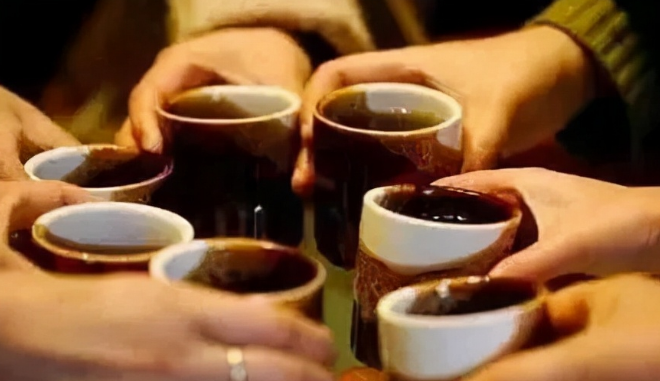When drinking baijiu, shake the bottle and we will find that the liquor will bubble up, which is commonly known as "hop". Many people think that more hops are good wine, less hops are poor quality; the faster the hops disappear, the higher the strength of the wine. Is it true?
In the process of making wine, the winemaker will determine the strength of the alcohol by watching the splash of the liquor into the container, which is known in the industry as "picking the flowers by watching the wine" 39bet-xì dách-phỏm miền bắc-tiến lên miền bắc-xóc đĩa-game bắn cá. The foam of the hop is large and the shape is uniform, which is called "big Qing Hua". The foam of the hop is fine and the shape is disorderly, which is called "small Qing Hua".
In life, many people will see the hops to identify the good or bad of wine, but this method is really open to question. The following wine to give you a brief introduction.
1, big clear flowers
Hops as large as soybeans, uniform, clear and transparent, disappear very quickly, 60 to 75% alcohol content (v/v).
2, small clear flowers
Hop size is like mung bean, clear and transparent, disappearing slower than big Qing Hua, wine degree is about 50 to 60% (V/V).
 3, clouds of flowers
3, clouds of flowers
Hop size such as rice grains, overlapping each other (can overlap two to three layers) for a long time, about 2 minutes, wine degree between 40~50%.
4, 2 flowers
Also known as floret, the shape of cloud flowers, different sizes, large such as rice, small such as millet, retention time and cloud flowers similar, wine degree between 15~40%.
5, and spray
Hop IS like millet 1/4, BE full OF LIQUID level, the oil bead that is ADVANCED FATTY acid forms MOSTLY, WINE DEGREE IS IN 5% (V/V) when the most obvious.
How should we look at hops?
In this age of additives, it's a bit far-fetched to judge the quality of a wine by hops alone. I have also looked up a lot of information. There is no information that simply by looking at hops can identify the quality of wine, but can only make a reference.
What should we observe about hope?
There are many terms for hop. In the industry, we will divide hop into: face flower, edge flower, inner flower, pile flower, sitting flower and loose flower.
Flourishes: Bubbles formed on the surface of liquor after intense shaking, also known as hops.
Edge flower: The hops that are pressed against the side of the glass are called edge flowers.
A small or speckled foam formed in liquor.
Heaped flower: The heaped flower thickness formed on the surface of liquor.
Sitting flower: The duration of the wine flour flower or inside flower.
Scatters: Hops to disperse or disappear.
What factors are related to hop quality?
There are many factors affecting hop, such as: wine age, wine degree, temperature, trace components, storage conditions and so on will affect hop, the following separate to say to you.
Wine age and hop Take clear flavor liquor as an example:
The degree of wine is the same, if the wine age is shorter, after hitting the hop, the bigger the dough, the shorter the sitting time, the scattered flower is very fast, and the hop is uneven. For example, a 53-degree liquor with half a year's wine age will appear as mung bean flowers after shaking the hops, and then scatter after being sandwiched with soybean flowers to peanut flowers.
The longer the wine age, the smaller and more even the hops, there are piles of flowers, and the sitting time is longer. For example, a 53-degree liquor with half a year's wine age will appear as mung bean flowers after shaking the hops, and then scatter after being sandwiched with soybean flowers to peanut flowers.
Conclusion:
The larger the hop, the faster it dissipates -- the higher the alcohol; the smaller and fewer the hops, the slower they dissipate -- the lower the alcohol.
Take luzhou flavor liquor as an example: 52% (v/v) and 38% (v/v) are common in the market, 52% (v/V) should show small clear flowers, such as the size of mung bean, and the dissipation speed is medium to high; while 38% (v/V) should show two flowers with different sizes and slow dissipation rate.
But because the alcohol concentration is different, the surface tension of the liquor is different, so the size of the hops formed by shaking the bottle and the holding time are different. Therefore, hop can be used as a reference to identify the strength of liquor.
